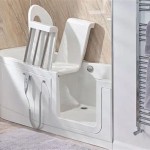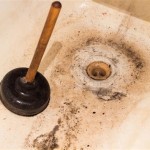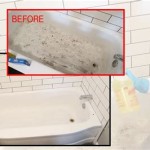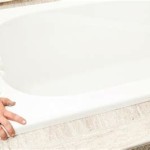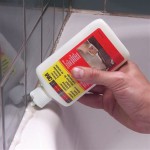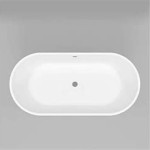How To Fix a Leaking Kohler Single Handle Bathtub Faucet
A leaking Kohler single handle bathtub faucet can be a persistent annoyance, wasting water and potentially causing damage to the surrounding area. Addressing this problem promptly not only conserves water but also prevents more significant issues, such as mold growth and structural damage. This article provides a comprehensive guide on diagnosing and repairing a leaky Kohler single handle bathtub faucet. It outlines the necessary tools, step-by-step instructions, and potential causes of the leak, enabling individuals to effectively resolve the issue.
Before commencing any repair work, safety should be the primary concern. Shutting off the water supply is crucial to prevent flooding and potential water damage during the repair process. Locate the shut-off valves for the bathtub faucet, typically situated beneath the sink or in an accessible location near the water heater. Turn both the hot and cold water valves clockwise until they are completely closed. Once the water supply is cut off, open the faucet to relieve any residual pressure in the pipes. This ensures a safer and more manageable repair process.
Gathering the appropriate tools beforehand ensures a smooth and efficient repair. The essential tools typically include: a flathead screwdriver, a Phillips head screwdriver, an Allen wrench set (various sizes), a crescent wrench, plumber's grease, a replacement cartridge (if needed), and a towel or rag to protect the bathtub finish. Having these tools readily available will minimize delays and facilitate a successful repair.
Identifying the Source of the Leak
Pinpointing the exact location of the leak is paramount to implementing the correct repair strategy. Common leak sources in a Kohler single handle bathtub faucet include the faucet handle, the spout, and the showerhead. Observe the faucet closely while the water is turned off, looking for any visible signs of water dripping or seeping from these areas. If the leak originates from the handle, it typically indicates a worn or damaged cartridge. A leak from the spout often suggests a problem with the O-rings or seals. A leaking showerhead, when the faucet is turned off, may point to issues with the diverter valve.
A leak that appears around the base of the handle when the faucet is in use is often indicative of a cartridge issue. The cartridge is the central mechanism that controls the flow and temperature of the water. Over time, the cartridge can wear down due to mineral buildup, corrosion, or general wear and tear. This deterioration leads to leaks and inconsistent water temperature. In such cases, replacing the cartridge is usually the most effective solution.
Leaks emanating from the spout, particularly when the faucet is turned off, are frequently caused by worn or damaged O-rings or seals. These rubber components create a watertight seal between the faucet body and the spout. As they age, O-rings and seals can become brittle, cracked, or lose their elasticity, resulting in leaks. Replacing these components is a relatively straightforward repair that can often resolve spout-related leaks.
If the showerhead drips when the faucet is supposed to be completely off, the diverter valve might be the culprit. The diverter valve directs the water flow either to the bathtub spout or the showerhead. When the diverter valve malfunctions, it may not completely shut off the flow to the showerhead, causing a persistent drip. Repairing or replacing the diverter valve can rectify this issue.
Replacing the Cartridge
Replacing the cartridge is a common repair for Kohler single handle bathtub faucets. The first step involves removing the faucet handle. Typically, there's a small set screw located on the side or underneath the handle. Use an Allen wrench to loosen the set screw and carefully pull the handle away from the faucet body. Some handles may have a decorative cap that needs to be pried off with a flathead screwdriver to access the set screw.
Once the handle is removed, there will typically be a retaining clip or nut that holds the cartridge in place. Use pliers or a wrench to carefully remove the retaining clip or nut. Note the orientation of the cartridge before removal, as the new cartridge must be installed in the same direction. Gently pull the old cartridge straight out of the faucet body. If the cartridge is stuck, a cartridge puller tool can be used to assist in its removal.
Before installing the new cartridge, thoroughly clean the inside of the faucet body with a clean cloth. Apply a thin layer of plumber's grease to the O-rings on the new cartridge. This lubrication helps to create a watertight seal and facilitates smooth operation. Insert the new cartridge into the faucet body, ensuring it is properly aligned and oriented as the old one was. Secure the cartridge with the retaining clip or nut, tightening it firmly but not excessively.
Reattach the faucet handle and tighten the set screw. Turn the water supply back on slowly and check for leaks around the handle and spout. If any leaks persist, double-check the cartridge installation and ensure that the retaining clip or nut is properly secured. Operate the faucet to test the water temperature and flow, ensuring that the new cartridge is functioning correctly.
Replacing O-Rings and Seals
To replace the O-rings and seals, the faucet spout must first be removed. Depending on the model, the spout may be threaded or secured with a set screw. If the spout is threaded, simply unscrew it from the faucet body. If it is secured with a set screw, loosen the set screw with an Allen wrench and pull the spout away from the faucet body.
Once the spout is removed, examine the O-rings and seals located at the base of the spout and inside the faucet body. Carefully remove the old O-rings and seals using a small pick or screwdriver. Clean the grooves where the O-rings and seals were located to remove any debris or mineral buildup. Apply a thin layer of plumber's grease to the new O-rings and seals before installing them. This lubrication helps to create a watertight seal and prevents the O-rings from drying out and cracking.
Install the new O-rings and seals into their respective grooves, ensuring they are properly seated. Reattach the spout to the faucet body, either by screwing it on or tightening the set screw. Turn the water supply back on slowly and check for leaks around the base of the spout. If any leaks persist, double-check the O-ring and seal installation and ensure that the spout is properly secured.
Selecting the correct replacement O-rings and seals is crucial for a successful repair. Measure the old O-rings and seals or consult the Kohler parts catalog to identify the appropriate sizes and materials. Using incorrect O-rings and seals can result in leaks and premature failure. It is advisable to purchase genuine Kohler replacement parts or high-quality aftermarket alternatives to ensure compatibility and durability.
Addressing the Diverter Valve
Accessing the diverter valve may require removing the faucet handle and the escutcheon plate. The escutcheon plate is the decorative cover that surrounds the faucet handle. Remove the handle as described previously. The escutcheon plate is typically held in place by screws or a retaining clip. Remove the screws or release the retaining clip to remove the escutcheon plate.
Once the escutcheon plate is removed, the diverter valve assembly will be visible. The diverter valve may be located inside the faucet body or in a separate housing. Examine the diverter valve for any signs of damage or wear, such as cracks, corrosion, or mineral buildup. If the diverter valve is damaged, it should be replaced.
To remove the diverter valve, disconnect any connecting hoses or pipes. The diverter valve may be held in place by screws, clips, or a threaded connection. Remove the fasteners and carefully pull the diverter valve out of its housing. Install the new diverter valve by connecting the hoses or pipes and securing it with the appropriate fasteners. Ensure that the diverter valve is properly aligned and seated.
Reinstall the escutcheon plate and the faucet handle. Turn the water supply back on slowly and check for leaks around the diverter valve and the showerhead. Test the diverter valve by switching between the bathtub spout and the showerhead. Ensure that the water flows correctly to each outlet and that there are no leaks. If leaks persist, double-check the diverter valve installation and ensure that all connections are properly secured.
Preventative maintenance plays a crucial role in extending the lifespan of the faucet components and minimizing the risk of leaks. Regularly clean the faucet handle, spout, and showerhead with a mild cleaning solution to remove mineral buildup and prevent corrosion. Periodically inspect the O-rings and seals for any signs of wear or damage and replace them as needed. Consider installing a water softener to reduce the mineral content of the water, which can prolong the life of the faucet components. By implementing these preventative measures, individuals can minimize the likelihood of leaks and maintain the optimal performance of their Kohler single handle bathtub faucet.

Fix A Leaking Single Handle Bathtub Faucet Kohler Repair

Fix A Leaking Single Handle Bathtub Faucet Kohler Repair

How To Fix A Leaking Bathtub Faucet Diy Family Handyman

How To Fix A Leaky Kohler Faucet

Kohler Worth 1 Handle 3 Spray Tub And Shower Faucet In Vibrant Brushed Nickel Valve Included R76258 4g Bn The Home Depot

Kohler Elmbrook Single Handle 3 Spray Bathtub Shower Trim Kit Brushed Nickel Canadian Tire

Kohler Worth Single Handle 3 Spray Tub And Shower Faucet In Oil Rubbed Broe Valve Included K R76258 4e 2bz The Home Depot

How To Repair A Dripping Kohler Shower Valve

Kohler Multiple Materials Tub Shower Cartridge Repair Kit In The Faucet Kits Components Department At Com
Why Is My Tub Still Leaking After Replacing The Cartridge I Replaced In S Handle Moen 1222b And Faucet What Could Be

